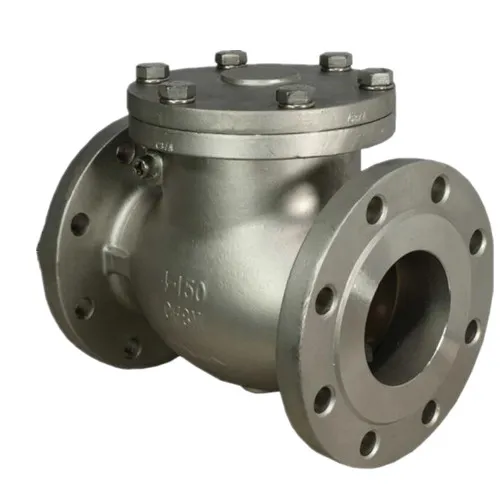Mobile:+86-311-808-126-83
Email:info@ydcastings.com
Understanding Motor Casing Structures and Their Importance in Mechanical Engineering
The Importance of Motor Casings A Comprehensive Overview
In the field of engineering and manufacturing, the motor casing is a critical component that often goes unnoticed. However, its role is integral to the overall efficiency, safety, and longevity of electric motors. This article delves into the significance of motor casings, their construction materials, their functions, and innovations that are shaping their design in modern applications.
What is a Motor Casing?
A motor casing, or motor housing, is the outer shell of an electric motor that encompasses its inner components, including the rotor and stator. Typically made from robust materials, the casing serves multiple purposes it protects the delicate parts of the motor from external environmental factors, provides structural integrity, and plays a vital role in heat dissipation.
Functions of Motor Casings
1. Protection One of the primary functions of a motor casing is to safeguard the internal components from physical damage, which may arise from external shocks, dust, moisture, and other pollutants. This protection is essential for maintaining the motor's operational efficiency and lifespan.
2. Heat Dissipation Electric motors generate heat during operation due to electrical losses and friction. A well-designed motor casing often includes features that facilitate heat dissipation, such as ventilation slots or cooling fins. Efficient heat management is crucial to prevent overheating, which can lead to performance degradation or motor failure.
3. Magnetic Shielding In certain applications, motor casings also serve as a barrier against electromagnetic interference (EMI). This is particularly important in precision applications, where signal integrity is critical. Casings made from ferromagnetic materials can help shield sensitive electronic components from external magnetic fields.
4. Aesthetic Appeal Besides functional aspects, motor casings can also contribute to the visual design of a product. In consumer-facing applications, a sleek and well-designed motor casing can enhance the overall aesthetics, making the product more appealing to consumers.
Materials Used in Motor Casings
The choice of material for motor casings greatly affects their performance and durability. Common materials include
motor casing

- Aluminum Lightweight and resistant to corrosion, aluminum is a popular choice for motor casings. It offers good thermal conductivity, which aids in heat dissipation.
- Steel While heavier than aluminum, steel is extremely robust and provides excellent protection against physical damage. Its magnetic properties also make it suitable for applications requiring EMI shielding.
- Plastic Composites In some cases, engineers opt for plastic composites due to their lightweight nature and resistance to corrosion. Modern plastics can be engineered to withstand high temperatures and mechanical stress, making them viable materials for certain motor applications.
Innovations in Motor Casing Design
The landscape of motor casing design is continually evolving, influenced by technological advancements and the push for improved efficiency. Some noteworthy trends include
1. 3D Printing The advent of additive manufacturing has opened new avenues for designing motor casings. With 3D printing, manufacturers can create complex geometries that enhance airflow for better cooling while reducing material waste.
2. Integration of Sensors Some modern motor casings are being designed to accommodate integrated sensors that monitor temperature, vibration, and other operational parameters. This real-time data can be invaluable for predictive maintenance, allowing for timely interventions before catastrophic failures occur.
3. Lightweight Design In a world increasingly focused on sustainability, reducing the weight of motor casings without compromising strength is a challenge engineers are addressing. Advanced materials and design techniques are enabling the creation of lighter yet equally durable casings.
4. Streamlined Manufacturing Processes Automation and improved manufacturing processes are making it easier to produce high-quality motor casings efficiently. Techniques such as robotic welding and precision machining are ensuring that motor casings meet stringent quality standards.
Conclusion
Motor casings, although often overlooked, play a vital role in the performance, durability, and safety of electric motors. Advances in design and materials are continuously shaping the future of motor casings, allowing them to meet the demands of modern technology and applications. As we move forward, the significance of these seemingly simple components will only grow, highlighting the intricate relationship between engineering principles and practical applications in our increasingly technological world.
-
Why Is Choosing the Right Motor Housing Critical for Engine Performance?NewsJul.18,2025
-
Which Impeller Types Best Optimize Your Pump’s Efficiency?NewsJul.18,2025
-
Optimize Maintenance Efficiency with Durable Oil Catch SolutionsNewsJul.18,2025
-
Maximize Pump Performance with Precision-Engineered ComponentsNewsJul.18,2025
-
Elevate Industrial Flow Systems with Precision-Engineered ComponentsNewsJul.18,2025
-
Boost Durability and Functionality with Precision Power CastingsNewsJul.18,2025











